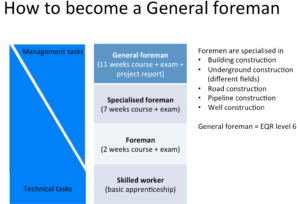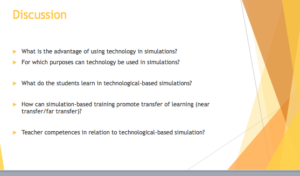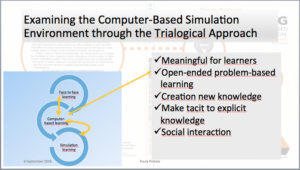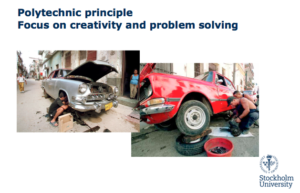Reflections on #ECER2018 – Part Four: Insights into different VETNET sessions
With my previous posts I have shaped a series of blogs on the European Conference of Educational Research (ECER 2018) that took place last week in Bolzano/Bozen. In the first post I reported on the pilot with ePosters powered by the digital toolset Learning Toolbox (LTB). In the second post I gave an overview on my own contributions – on the research background of the LTB and on ‘transfer of innovation’ issues in recent and earlier innovation projects. In the third post I reported on the Opening Session of our VETNET network (European Vocational Education and Training Research Network) and on some contributions of our Italian colleagues. This fourth post will give insights into some of the VETNET sessions that I attended. Here it is worthwhile to note that I don’t try to cover the whole VETNET program nor the sessions that I attended. Instead I try to draw attention to some specific presentations.
Continuing vocational training, progression to managerial positions and digital tools for learning
My colleagues Werner Müller and Ludger Deitmer presented the newest phase of the German project DigiProB. This project focuses on a Continuing Vocational Training (CVT) model that outlines a purely vocational progression route to higher qualifications. As we reported in ECER 2015, this training model has been renewed in such a way that it is not only based on subject-specific courses but – also – integrated with complex working and learning tasks and by an integrative project report.
The training model for General Foremen
Now, in the present phase of the project, the colleagues could report on the shaping of the software ecology that had been developed to support the training and learning processes.
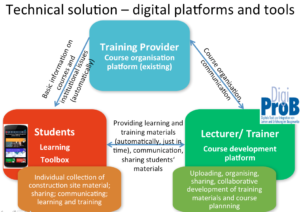
The software ecology supporting training and learning
Ten years European Qualification Framework (EQF) – A success story?
In another session Sandra Bohlinger took as her starting point the ten year anniversary of the European Qualification Framework (EQF). In her presentation she had a number of quotes that presented the ‘promises’ at the beginning phase and the others that celebrated the ten years as ‘success story’. However, looking closer to the development during these years she presented a more differentiated picture. Surely, the number of countries that have adopted the framework is larger than the number of EU Member States. And for countries that experienced a transformation from planned economy to market economy the framework appeared as an appropriate support instrument. However, the key message coming through from the evaluation studies that have been carried out recently is that no there has not been such an impact at the European level as had been expected. This, as we discussed in the session, is quite an impact itself when thinking of European policies.
To me this was another input in the continuing story of debates on the EQF at ECER and in VETNET sessions. All these years our collegues have made critical remarks on the internal contradictions in such frameworks and their limited potential in promoting transparency between different VET cultures. However, in this session we raised a new issue – what has happened to ‘earlier’ themes in European cooperation that had been sidelined during the years of making EQF and its national and sectoral counterparts. As I see it, these exercises were ‘translating’ national frameworks to a common ‘esperanto’ terminology and sidelined the tradition of ‘learning from each other’. (I hope that Sandra will publish her text soon so that we can continue this discussion.)
Use of technologies in learning – Encounters between high and low technologies
Another interesting session was composed as a symposium that brought together different perspectives to using technologies as support for vocational learning. Marianne Teräs introduced the symposium and presented the palette of presentations and as contributions to ‘use of technologies’ or challenges with technologies in the context of vocational learning. Two of the presentations focused on simulations in the healthcare sector whilst the third one discussed the relations between ‘high’ and ‘low’ technology in a developing country.
Vibe Aarkrog presented her action research project in which she studied learning simulation-based arrangements within nursing education. She gave us insights into her research design and into the discussion on ‘high fidelity’ simulations vs. ‘low fidelity’ simulations. Then she drew attention to different scenarios (framing the learning situations) and to possible interventions of teachers. At the end she raised several useful questions on the role of simulations as support for learning.
Paula Poikela presented her research on the development of simulation-based learning in nursing education. In this context she gave us insights into the earlier models of computer-based simulations, to the emergence of web resources, mobile devices and wearable technologies. She also drew attention to different waves of simulation in healthcare sector, starting from arrangements for medical doctors and then shifting to specific simulations for nurses and to arrangements that involve different healthcare professionals. She concluded her presentation with a trialogical approach to examining meaningful learning based on simulations.
In the final presentation of the symposium Lazaro Moreno opened a different perspective to using technologies to support learning. He told of a new project in which he studies the training for automotive occupations in Cuba. He gave us a picture of a huge gap in resources and equipment by comparing a) companies that bring brand new cars and maintenance software to serve the tourists and b) vocational schools that train their pupils to repair the oldtimers that are used by local people (and have at best very old computers). With this contrast he drew attention to the principles of polytechnic education – training creativity and problem-solving skills.
The symposium was characterised by a lively discussion in which the colleagues added further aspects to the theme ‘supporting menaingful learning’. Also, the participants emphasised the difference between technology at work and technology for learning. These may not necessarily go hand in hand – and this may provides chances for meaningful educational interventions.
—
I guess this is enough of the VETNET sessions. Although this report is far from a comprenehsive coverage, it nevertheless shows the richness in content. In my final post of this series I will focus on the VETNET network and its general assembly.
More blogs to come …
